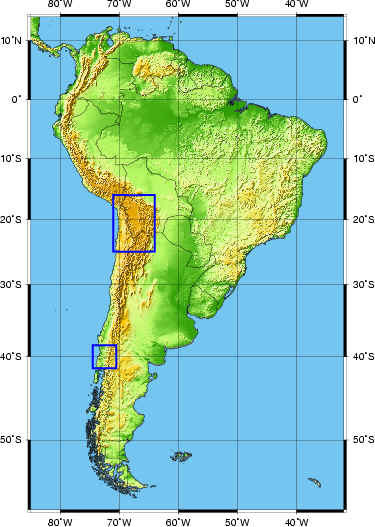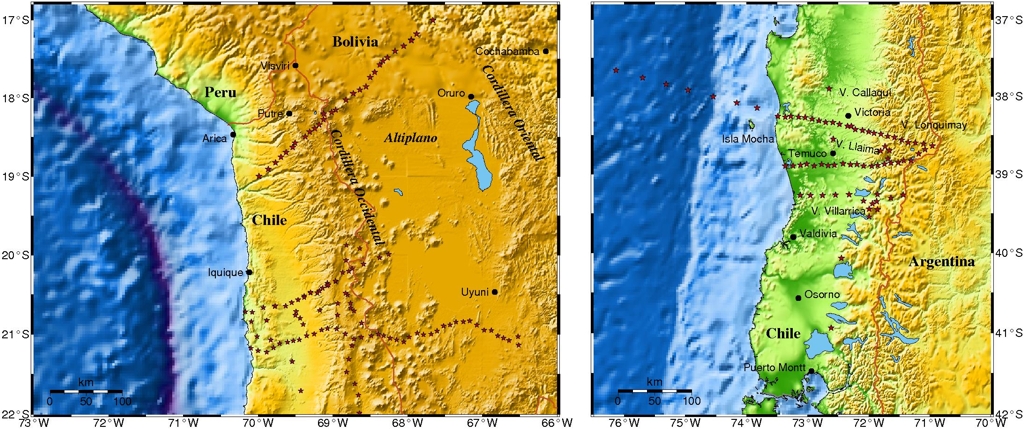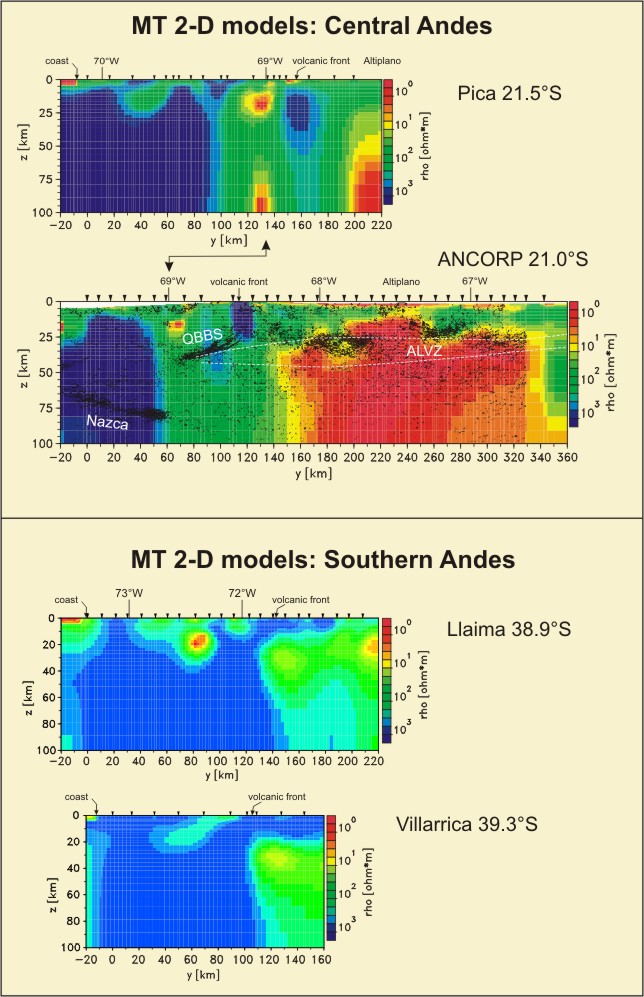
The principal investigation area of the FUB magnetotellurics group are the Central and Southern Andes of Chile, Bolivia and Argentina. The studies have been carried out as a subproject of the Special Research Programme SFB 267 "Deformation Processes in the Andes" (funded by German Science Foundation DFG) together with the MT group at the GeoForschungsZentrum Potsdam, and since 2004 within the TIPTEQ programme (funded by Federal Ministry of Education and Research BMBF).
The investigations of the MT subproject in the last years have concentrated on 6 topics: 1) The Altiplano conductivity anomaly including sensitivity studies to constrain upper bounds of electrical conductivity and depth extent; 2) Detailed study of large shear zones in the central Andean forearc (Precordillera Fault System and Atacama Fault) in close co-operation with subproject C5B; 3) Re- and extended interpretation of older data sets covering the Chilean forearc as well as the Argentinian backarc; 4) Two traverses in South Chile at ~39°S carried out in 2000; 5) A comparative transect across the Altiplano at ~18°S, measured at the end of 2002 and 2004, respectively; 6) An amphibious experiment at ~38°S in austral summer 2004/2005 (TIPTEQ).
The studies have been carried out in cooperation with E. Ricaldi, P. Miranda and F. Ticona (UMSA La Paz ), G. Chong and H. Wilke (UCN Antofagasta), Miguel Muñoz (U Santiago) and K. Bataille (U Concepción). The offshore campaign was carried out in cooperation with A. Chave and J. Bailey (WHOI); their instruments were deployed on RV Sonne cruise SO 181.
Working areas in the Central and Southern Andes (white rectangles). Red triangles mark recent volcanoes.

